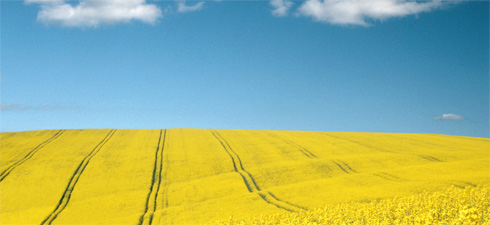Forests are often cut down to make room for biofuel production, which is why it can hardly be termed a “sustainable” energy source. In an effort to remedy the situation, the European Commission this week announced a new certification scheme for “real” sustainable biofuels. But does this new approach in Brussels really address the problem of the unsustainability of biofuels?
No, it doesn’t, observes Jan Ros, head of a bio-energy project at the Netherlands Environmental Assessment Agency (PBL). To be sure, the new certification scheme might keep some forests from being felled to produce palm or rapeseed oil for our fuel tanks. But then that palm or rapeseed might have to be grown on soil previously used to grow wheat for food. Which would mean relocating the wheat production to new sites, which would have to be cleared by chopping down the existing trees there. Which clearly wouldn’t reduce greenhouse gas emissions, which is, of course, the whole point of using biofuels. On the contrary, that would ultimately increase emissions and the European Commission’s new directive still doesn’t take this 'indirect effect' into account.
"That is indeed cause for concern,” points out Ros. And the Commission concurs, so it is currently looking into complementary criteria for a more precise definition of biofuel sustainability. This is no simple matter, concedes Ros, who regularly confers with Brussels experts in this domain. He insists on the need to develop models for calculating world agricultural production data. "If a grain crop gives way to rapeseed production, for example, you’ve got to wonder whether that isn't going to increase demand for grain in the global market.” The models are highly complex, since they have to allow for many different factors, including world population growth. "But at least they’d make it possible to assess risks,” explains Ros.
Now supposing all the models show that increased biofuel production indirectly leads to the disappearance of natural areas elsewhere. What can the responsible policymakers like the European Commission do about that? One solution might be to intensify food production so as to increase the yield per hectare on the same land. But if that entails using more artificial fertilisers, the upshot will be a further increase in greenhouse gas emissions. Other options include making greater use of inedible waste products from food crop production, though this application needs to be further developed, or confining biofuel cultivation to land that is unfit for food crops. Europe could also quite simply raise its emissions reduction targets, or reward countries that avoid using new land by improving their agricultural productivity.
So it’s far from easy, Ros reiterates. "But this is the new inescapable challenge for sustainability. Not only does every production chain have to be clean, but we’ve also got to ask how many of those chains the world can actually afford.”
2020 Target
EU targets require 2–5 million hectares of farmland
By 2020, 10% of the fuel for road traffic is to stem from renewable energy sources, the EU 27 have decided. Conventional petrol can by replaced by bioethanols made from sugars or starches. Diesel can be replaced by biodiesel made from vegetable oils extracted from e.g. oil palms or rapeseed. The EU calculates that to achieve its 10% target, it will need between 2 and 5 million hectares of arable land. According to the latest available figures, biodiesel accounts for three-quarters of the alternative fuel used in the EU; bioethanol 15%, and pure vegetable oil the remaining 10%. Between a quarter and a third of the biofuel used in Europe comes from abroad. In 2008, biofuel made up 3.4% of the fuel used throughout the European Union.
Was this article useful? If so we are delighted!
It is freely available because we believe that the right to free and independent information is essential for democracy. But this right is not guaranteed forever, and independence comes at a cost. We need your support in order to continue publishing independent, multilingual news for all Europeans.
Discover our subscription offers and their exclusive benefits and become a member of our community now!












